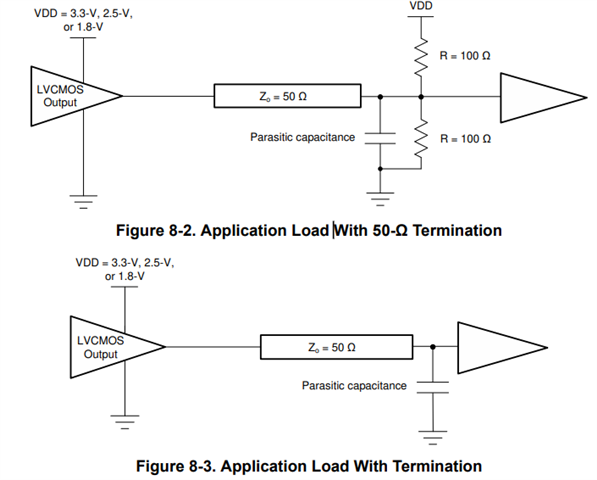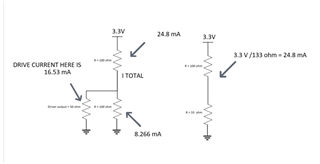Other Parts Discussed in Thread: CDCLVC1104,
Hi,
I'm looking at LMK1C1104 to replace CDCLVC1104. I have two basic questions regarding termination.
1. The same receiver can be terminated with 50ohm like Figure 8-2 while it can be un-terminated like Figure 8-3. What's the difference in operation between two?
>> LMK1C1104 datasheet

2. When I'm comparing Figure 8-3 in LMK1C1104 and Figure 5 in CDCLVC1104, it looks the former one does not require Rs. May I know why?
>> CDCLVC1104 datasheet

3. Output impedance of CDCLVC1104 is 45ohm at 3.3. I expected Rs should be 5ohm but it's recommended to be 10ohm in Figure 5. Can you kindly explain why?
Thanks,
Ella


